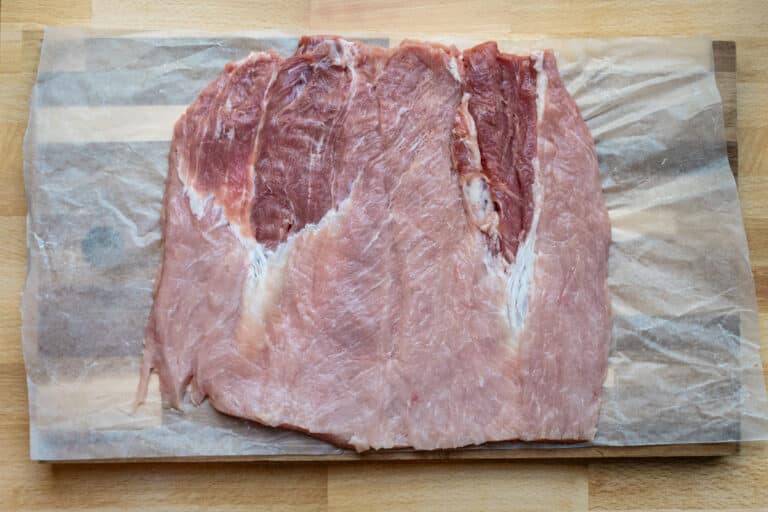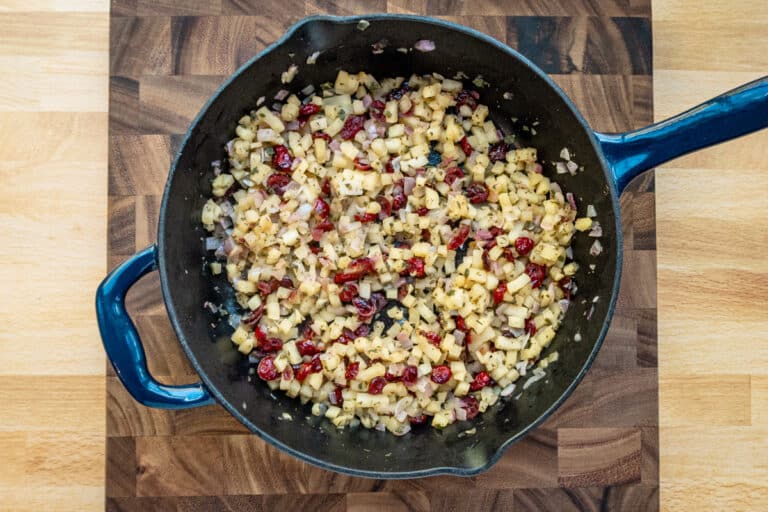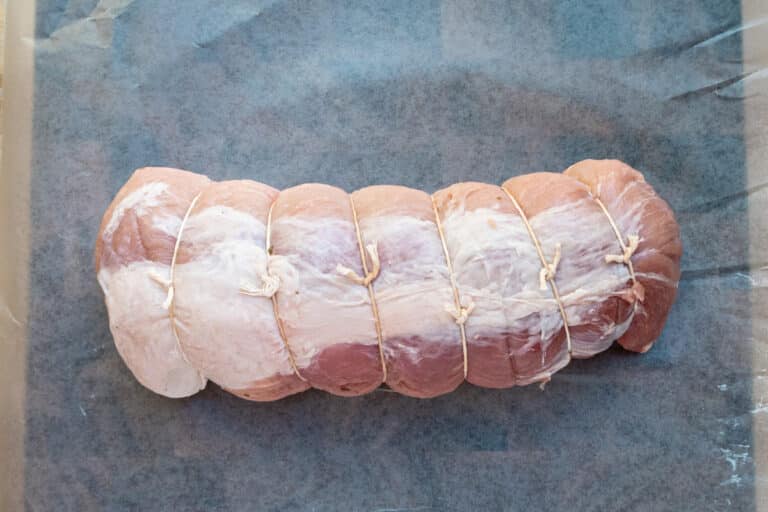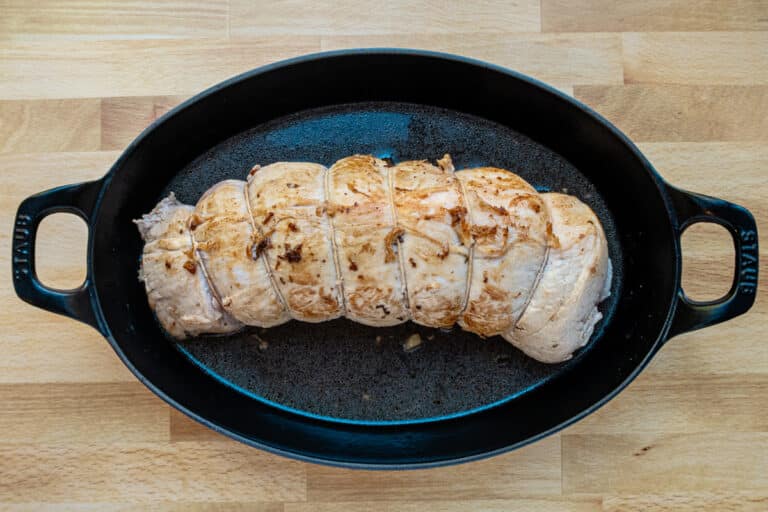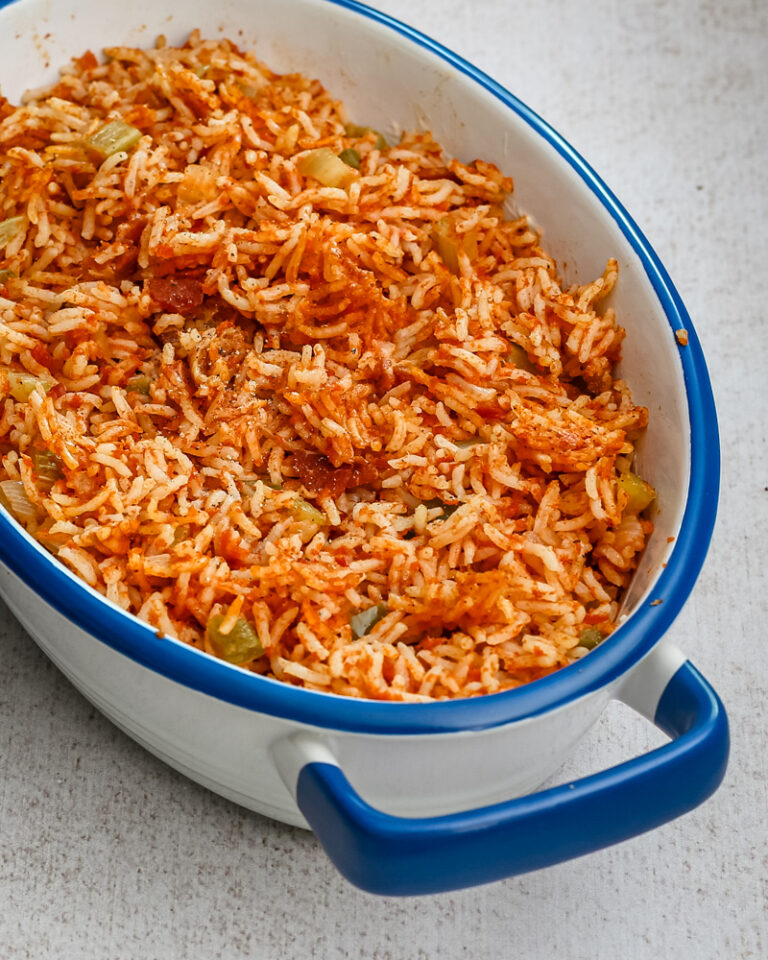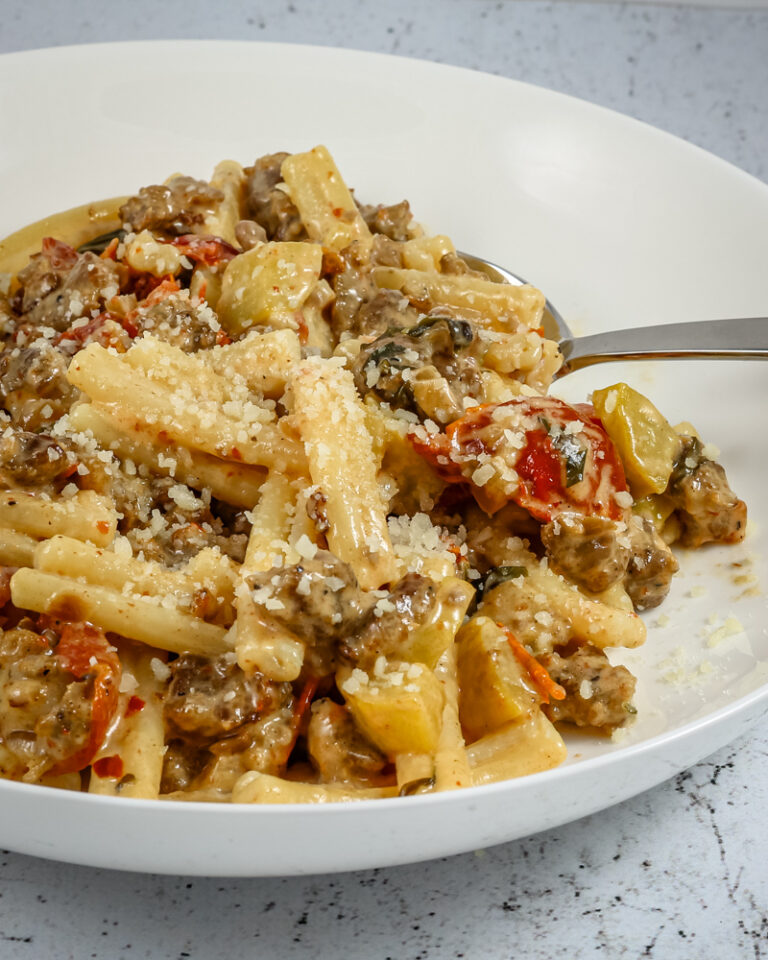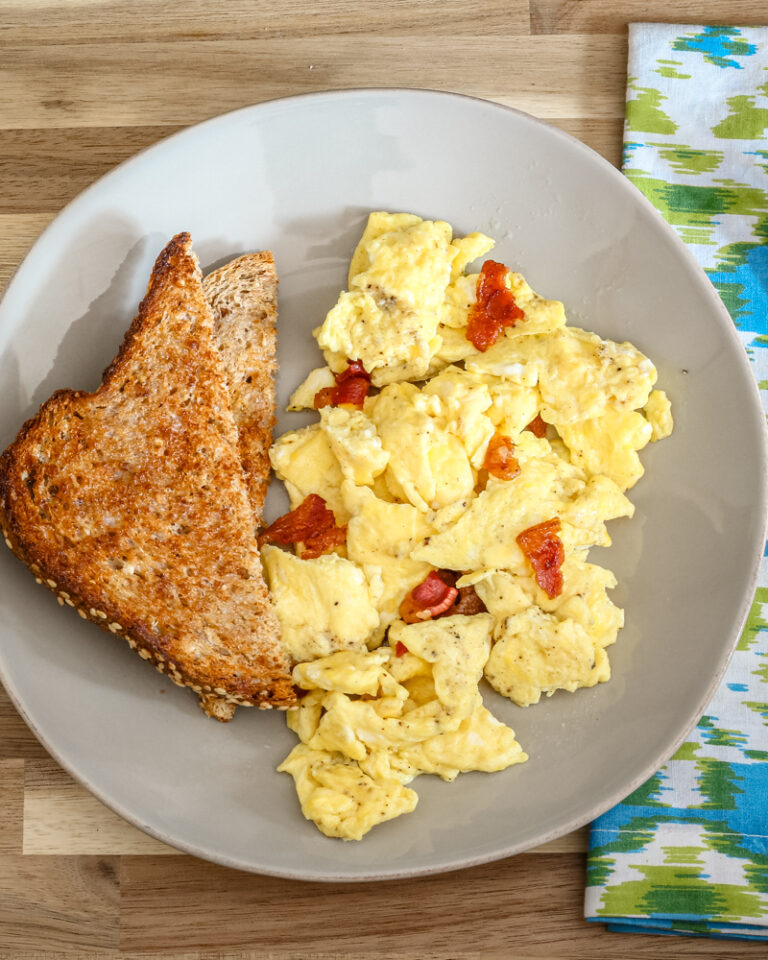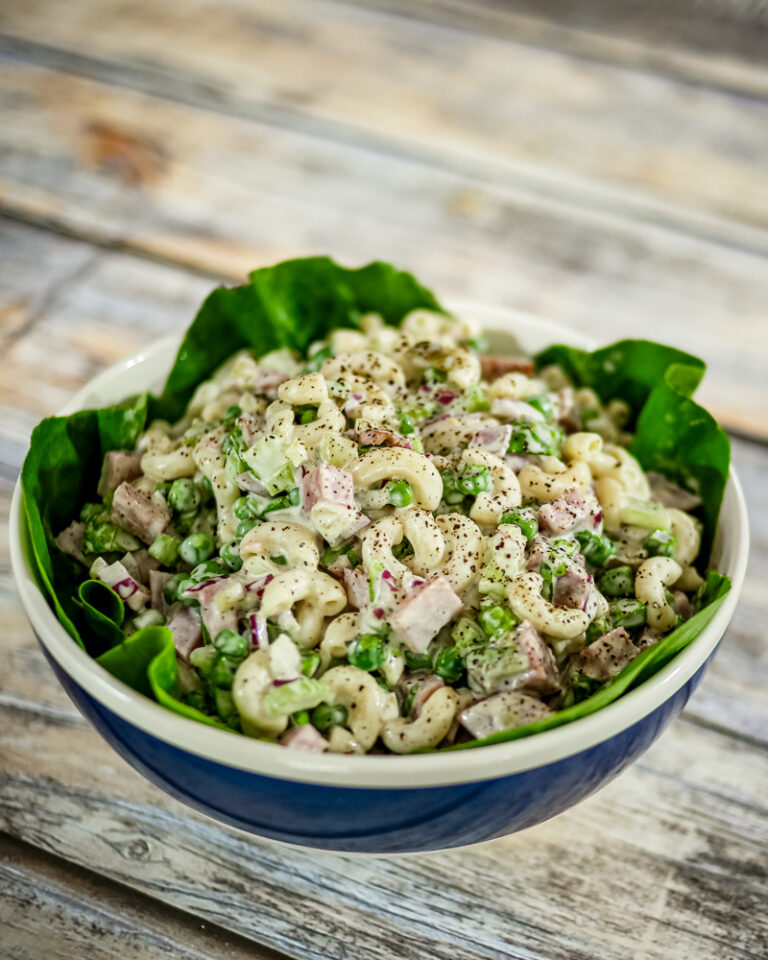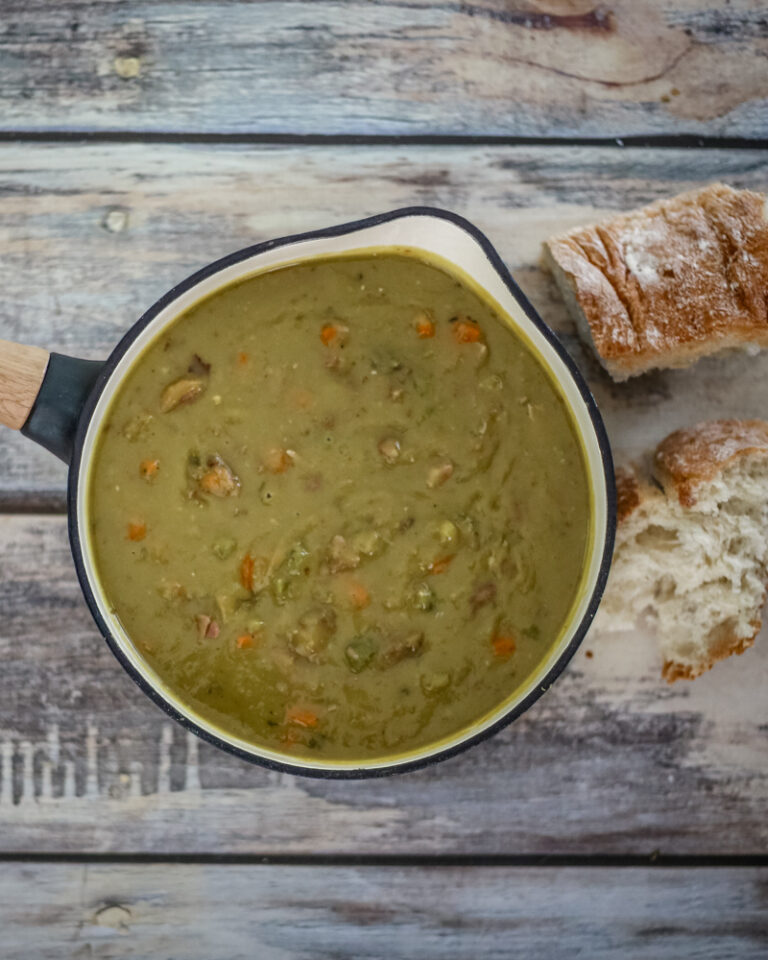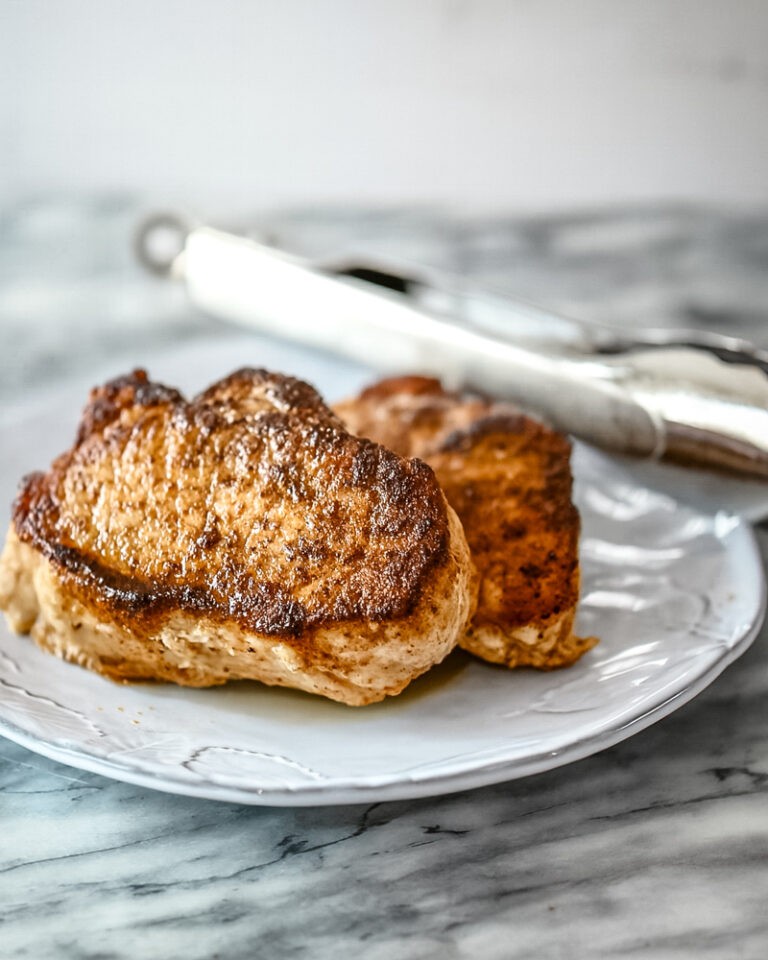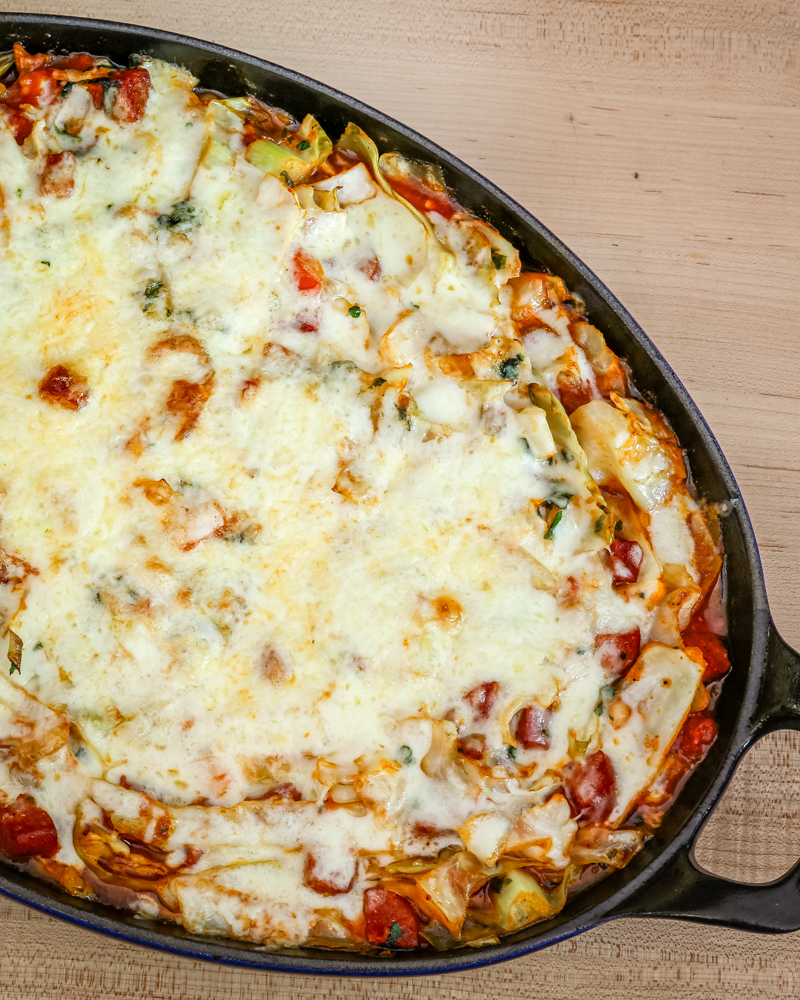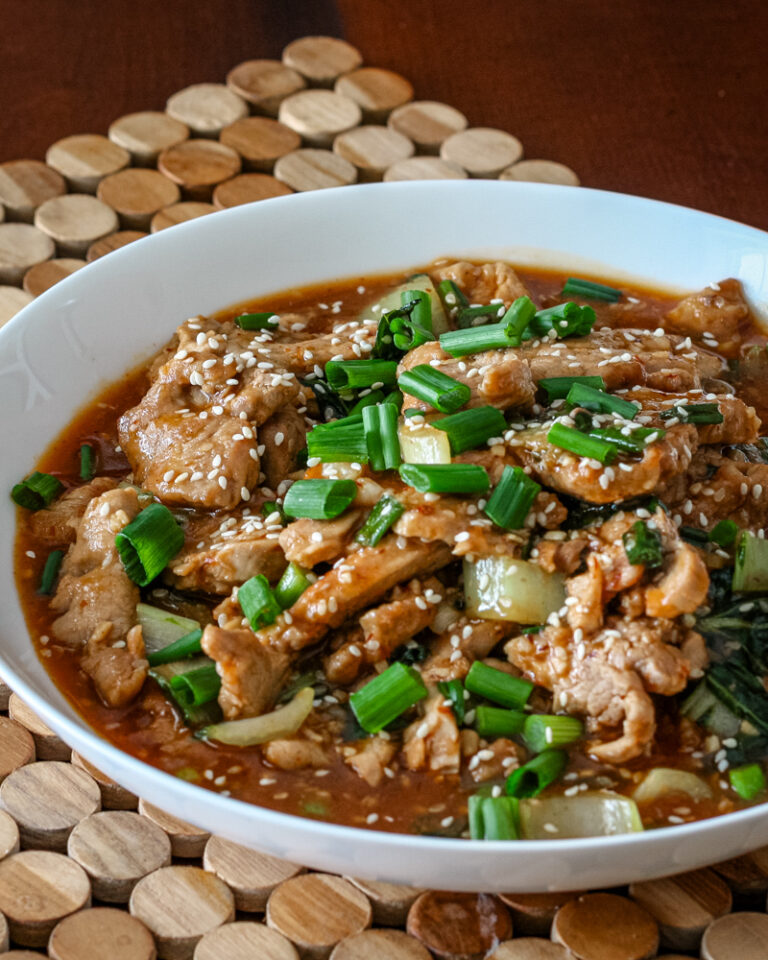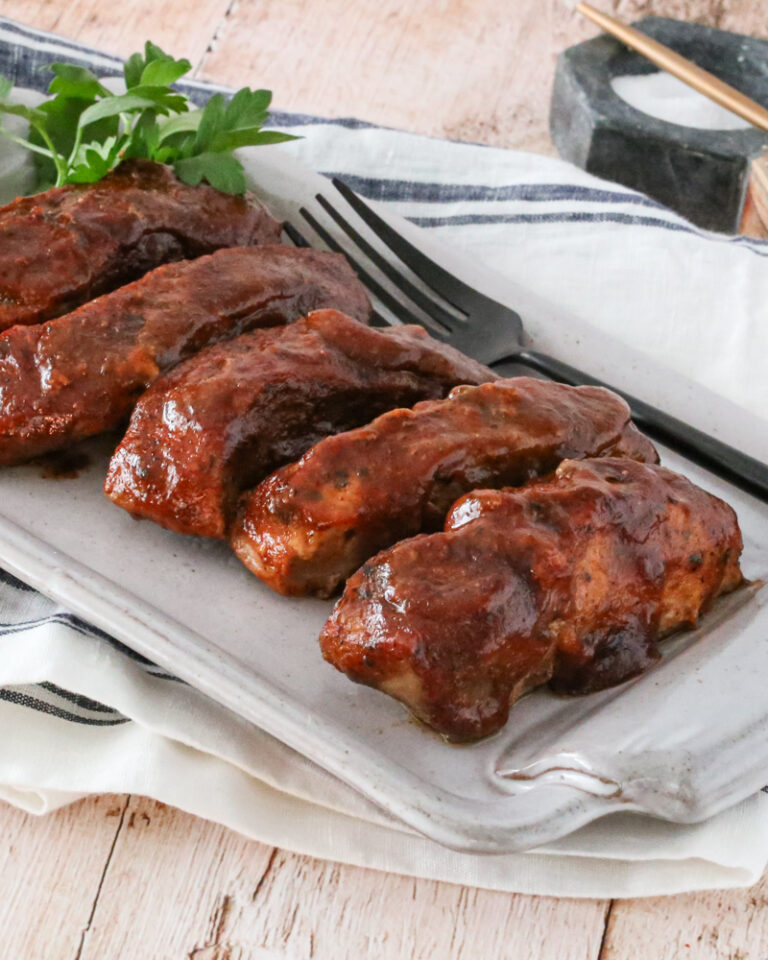Apple and Cranberry Stuffed Pork Loin
Stuffed pork loin roast with apples, shallots, sage, and cranberries—roasted with wine and broth for a savory, seasonal main dish.

This stuffed pork loin is everything you want in a special roast—tender pork wrapped around a savory-sweet mixture of apples, shallots, sage, and dried cranberries. It’s festive enough for holidays but simple enough for a weekend or Sunday dinner.
The roast is butterflied, rolled, stuffed, and tied before roasting with chicken broth and white wine, creating flavorful drippings that can be transformed into a quick pan sauce. The roast slices beautifully and pairs well with mashed potatoes or roasted vegetables.
It’s easy to adapt this recipe to suit your preferences or what you have on hand. You could use pears as the fruit instead of apples, or you might add chopped pecans or walnuts for extra texture. Try different herbs or herb mixtures, like thyme or herbes de Provence, to add a unique flavor. And for a bold twist, consider adding diced bacon or pancetta, partially cooked, to enhance the pork’s moisture and flavor.
What You’ll Like About This Dish
Perfect for entertaining. A rolled and stuffed roast looks impressive when sliced, offering a beautiful spiral of filling that makes this dish ideal for holiday tables or special gatherings.
Balanced savory-sweet flavor. The combination of sautéed shallots, tender apples, cranberries, and sage adds complexity without overpowering the natural taste of the pork.
Moist and tender texture. The filling helps insulate the pork as it cooks, keeping the meat juicy while also adding a contrasting bite inside each slice.
Flexible and customizable. With simple ingredient swaps—like pears, nuts, pancetta, thyme, or herbes de Provence—you can tailor the flavor to the season or the occasion.
Make-ahead friendly. The filling can be prepared ahead, and the rolled, tied pork can rest in the refrigerator before roasting, making entertaining far easier.
Ingredient Notes
- Pork loin roast – Choose a center-cut loin (not tenderloin). Its even thickness makes it easy to butterfly, roll, and slice into tidy portions.
- Shallots – Provide a mild, sweet onion base without overpowering the fruit; sweet onions can stand in if needed.
- Apples – Firm apples like Honeycrisp, Braeburn, or Fuji hold their shape during cooking and stay pleasantly tender rather than turning mushy.
- Fresh sage – Adds earthy, herbal depth to the filling. If using dried sage, reduce to about 2 teaspoons, as dried herbs are more concentrated.
- Dried cranberries – Supply both color and subtle tart-sweet flavor; they plump slightly as the roast cooks.
- White wine – A dry wine enhances the aromatics and produces a bright, flavorful roasting liquid. Apple cider makes a delicious non-alcoholic substitute.
- Chicken broth – Helps create moist, rich drippings that can be used as-is or transformed into a simple pan sauce.
How to Make Stuffed Pork Loin
- Butterfly the pork loin and pound it gently between sheets of plastic wrap to create an even thickness. An even surface makes rolling easier and ensures the roast cooks uniformly. Chill the prepared pork while you make the filling.
- Sauté the shallots in butter and a small amount of oil until soft and fragrant. Add the apples and cook just until tender, then stir in the sage, cranberries, and seasonings. Deglaze with wine or cider and reduce until nearly evaporated. Allow the mixture to cool so it spreads easily without steaming the meat.
- Spread the filling evenly over the pork, leaving a small border along the edges so the filling doesn’t spill out when rolled. Roll the pork tightly and secure it with kitchen twine to maintain its shape during roasting.
- Optional but recommended: Sear the pork in a skillet to develop golden color and deepen the flavor before roasting.
- Transfer the roast to a baking dish and pour broth plus any remaining cider or wine around it. Roast until the pork reaches 140–145°F in the center, then let it rest to allow juices to redistribute. Slice into rounds to reveal the swirl of filling.
Pro Tips
- Chill the butterflied pork briefly before spreading the filling—it stays firmer, rolls more easily, and holds its shape without tearing.
- Use a sharp knife for butterflying; keep the blade parallel to the cutting board and work slowly to avoid cutting through the roast.
- If the filling seems too moist, cook it a bit longer to reduce liquid. A slightly drier filling prevents the roll from unraveling.
- Tie the roast firmly at 1-inch intervals. Consistent tying helps the roast cook evenly and produces even, restaurant-quality slices.
- Let the roast rest before slicing; cutting too soon causes juices to escape and can dry out the meat.
Recipe Variations
- Use pears instead of apples. Pears add a softer, floral sweetness and pair beautifully with sage, cranberries, and pork.
- Add nuts. Chopped pecans or walnuts create extra texture and a nutty richness that complements the fruit filling.
- Try different herbs. Thyme, rosemary, or herbes de Provence offer aromatic, savory alternatives to sage.
- Include bacon or pancetta. Adding partially cooked bacon or pancetta increases moisture and contributes smoky depth to the filling.
Serving Suggestions
- Serve with mashed potatoes, sweet potatoes, or roasted root vegetables.
- Add a crisp green salad or cranberry relish on the side.
- Pair with crusty bread to soak up the juices.
- Garnish with fresh herbs or pomegranate seeds for color.
How to Store
Refrigerate: Wrap leftover sliced pork tightly and refrigerate for up to 3 days. Add a splash of broth when reheating to keep it moist.
Freeze: Freeze slices in airtight containers or freezer bags for up to 2 months. Thaw overnight in the refrigerator.
Reheat: Warm gently in a covered baking dish at 325°F with a little broth, or microwave in short bursts until heated through.
Frequently Asked Questions

Apple and Cranberry Stuffed Pork Loin
Ingredients
- 2 1/2 to 3 pounds pork loin roast
- 2 tablespoons butter
- 2 tablespoons vegetable oil, (divided)
- 1/2 cup finely chopped shallots
- 4 apples, (medium, peeled and diced, about 2 cups)
- 2 tablespoons fresh sage, (chopped, or 2 teaspoons dry sage)
- 1/3 cup dried cranberries
- Kosher salt and freshly ground black pepper, (to taste)
- 1/2 cup white wine, (or apple cider)
Optional Pan Sauce
- 1/4 cup dry white wine
- 1/2 cup chicken broth
- 1 teaspoon Dijon mustard
- 1 teaspoon cornstarch
- 1 tablespoon butter
- 1 splash lemon juice or white wine vinegar, (to taste)
Instructions
- Butterfly the pork loin.* Lay the pork loin on a cutting board and carefully butterfly it. Cover the butterflied pork with a piece of plastic wrap, and gently pound to thin. Refrigerate while you make the filling.
- Prepare the filling. Melt the butter and 1 tablespoon of the oil in a skillet over medium heat. Add the shallots and cook for 2 minutes or until softened. Add the diced apples and cook until tender, about 3 to 5 minutes. Add the sage and dried cranberries and sprinkle lightly with salt and pepper. Deglaze the pan with 1/4 cup of dry white wine or apple cider. Cook until it has almost evaporated. Let the filling cool slightly.
- Heat the oven to 350°F.
- Arrange the filling on the pork. Spread the filling over the butterflied pork loin, leaving a border of about 1 inch. Roll the pork up tightly and secure with kitchen twine every inch or so. Sprinkle the pork with salt and pepper.Sear the pork (optional). If your skillet will accommodate the pork roll, heat the remaining 1 tablespoon of oil in it over medium-high heat. Sear the pork for about 4 to 6 minutes, turning carefully to brown all sides. Transfer the pork to the baking dish.
- Roast the stuffed pork. Add the remaining apple cider to the baking dish along with 1/2 cup of chicken broth. Roast the pork, uncovered, for about 1 to 1 1/4 hours or until it reaches 140°F to 145°F in the center of the meat. Remove the meat to a rack, tent the pork with foil, and let it rest for 10 minutes before slicing.
Optional Sauce
- Strain the pan juices into a saucepan to remove the excess fat and solids. Add 1/4 cup dry white wine and 1/2 cup of chicken broth and bring to a simmer over medium-low heat. Whisk in 1 teaspoon of Dijon mustard.
- Combine 1 teaspoon of cornstarch with 2 teaspoons of cold water and mix to form a slurry. Whisk into the sauce mixture and simmer until reduced and thickened, about 5 minutes. Stir in 1 tablespoon of butter and add a splash of lemon juice or white wine vinegar, to taste.
Notes
Nutrition
Disclaimer:
Our nutritional information is based on a third-party application that analyzes the ingredients list to determine the values. The information is meant to be helpful, but should be considered an estimate. Values may differ depending on measurements, brands, serving variations, and database availability.

